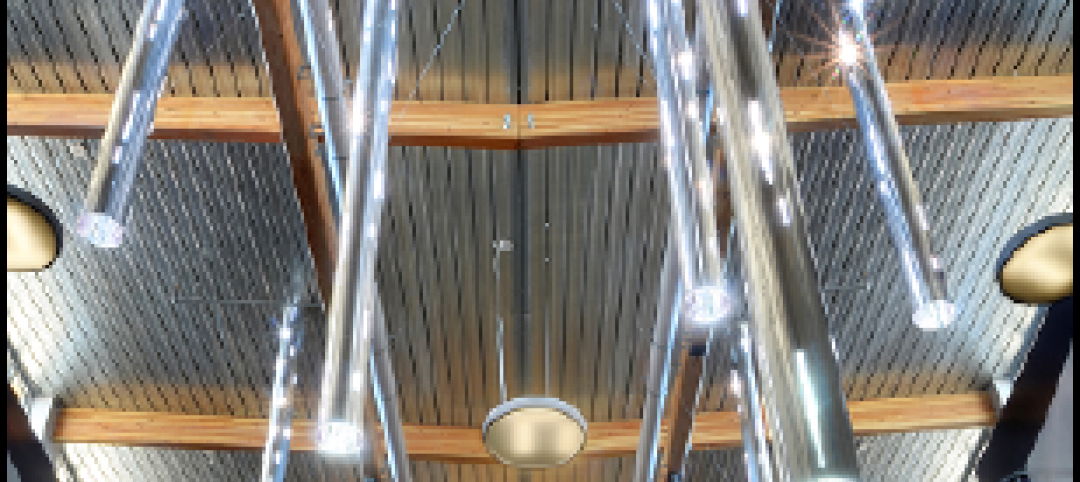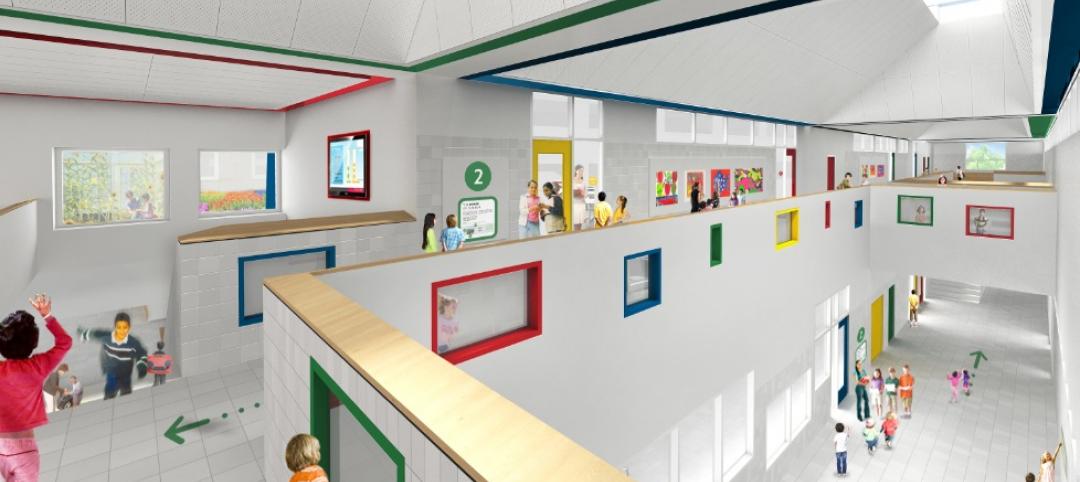Location: Pingree Grove, Ill.
Installation time: 148 days
Size: 19,000 sf
When DRH Cambridge Homes Inc. annexed a planned development with 3,000 homes into Pingree Grove, a small farm village northwest of Chicago, the principal school district needed assistance to meet the growing student population. Cambridge Homes engaged Presidential Services to research a solution that would bring a shorter school creation cycle, reduce costs, and provide space flexibility that would serve a life-long learning commitment for the emerging new village.
The team determined that a combination of site-built and prefabricated components would meet all three criteria, and the research and partnership led to the creation of the Cambridge Lakes Learning Center (CLLC) – a multi-building campus joined by prefabricated corridors – on a 15-acre site within the new development.
The Process
The action plan included opening a K-8 public charter school and a private pre-school within three buildings in the fall of 2007. Whitley Manufacturing was selected to provide the modular portions of the building. After completion of the first phase, Whitley provided both the second and third phase of development – an addition to the third and fourth grade building, and new construction of a seventh and eighth-grade classroom building.
The accelerated delivery schedule of modular construction allowed the school to scale their facilities to match enrollment. In order to keep disruption to the campus to a minimum, the modular units were built in the factory during the spring, with the balance of work occurring over the summer.
Architectural Excellence & Sustainability
Central, steel-structured “kivas” with high ceilings and expansive clerestory windows were site-built, and the modular units were set around this, forming an interior layout designed for flexibility and a visually appealing exterior. To create a modern aesthetic, the steel of the roof system and white-painted galvanized spiral ductwork were exposed. Sustainable acoustical panels above the structural steel created a well-insulated roof system that also reduces sound transmission.
Each classroom was designed with five natural activity centers, offering flexibility for teachers. Daylighting and passive lighting were used to improve efficiency and support active learning in the classroom.
Cost Effectiveness
The building was designed to deliver value through reduction in upfront costs and long-term savings through reduced operating costs delivered by energy-efficient features and systems. The exterior of the building was clad with a uniquely manufactured fiber cement panel product in cut stone, brick, and wide-lap siding finishes that deliver superior performance and durability at a reduced cost. Insulation was increased throughout the building, including the use of structural acoustical panels with integrated rigid insulation above.
Energy efficient, three-phase packaged HVAC units are roof-mounted and screened behind parapets, preserving the exterior aesthetic. Commercial-grade windows and doors with dual pane, Low-E glazing were used throughout the entire structure. Extensive value engineering and close coordination of the project team developed an optimal scope of work that delivered maximum value to the client.
For more information on the project, visit www.whitleyman.com.
 About MBI
About MBI
The Modular Building Institute (MBI) is the international nonprofit trade association serving the modular construction industry. Members are suppliers, manufacturers, and contractors engaged in all aspects of modular projects, from complex multistory solutions to temporary accommodations. As the voice of commercial modular construction, it is MBI's mission to expand the use of off-site construction through innovative construction practices, outreach, and education to the construction community and customers, and recognition of high-quality modular designs and facilities. For more information on modular construction, visit www.modular.org.
Related Stories
K-12 Schools | Jun 2, 2016
Chicago charter school designed by Studio Gang emphasizes sustainability and wellness
The Academy for Global Citizenship’s new purpose-built structure, located in the Garfield Ridge neighborhood of Chicago, is meant to reflect its operating philosophy that the path to a more sustainable future begins in the classroom.
Industry Research | Feb 22, 2016
8 of the most interesting trends from Gensler’s Design Forecast 2016
Technology is running wild in Gensler’s 2016 forecast, as things like virtual reality, "smart" buildings and products, and fully connected online and offline worlds are making their presence felt throughout many of the future's top trends.
K-12 Schools | Feb 4, 2016
Grimshaw and BVN design 14-story public school in Australia
The design of the high-rise is based on the template of Schools-within-Schools (SWIS), a system that de-emphasizes age groups.
| Jan 14, 2016
How to succeed with EIFS: exterior insulation and finish systems
This AIA CES Discovery course discusses the six elements of an EIFS wall assembly; common EIFS failures and how to prevent them; and EIFS and sustainability.
K-12 Schools | Nov 10, 2015
New York City opens SOM-designed net-zero school
The Kathleen Grimm School for Leadership and Sustainability at Sandy Ground will produce 662,500 kWh of energy, which will offset the amount of energy it consumes.
Designers | Sep 21, 2015
Can STEAM power the disruptive change needed in education?
Companies need entrepreneurial and creative workers that possess critical thinking skills that allow them to function in collaborative teams. STEAM (science, technology, engineering, arts, and mathematics) education might be the solution.
Giants 400 | Aug 7, 2015
K-12 SCHOOL SECTOR GIANTS: To succeed, school design must replicate real-world environments
Whether new or reconstructed, schools must meet new demands that emanate from the real world and rapidly adapt to different instructional and learning modes, according to BD+C's 2015 Giants 300 report.
Contractors | Jul 29, 2015
Consensus Construction Forecast: Double-digit growth expected for commercial sector in 2015, 2016
Despite the adverse weather conditions that curtailed design and construction activity in the first quarter of the year, the overall construction market has performed extremely well to date, according to AIA's latest Consensus Construction Forecast.
K-12 Schools | Jun 30, 2015
San Diego charter school finds home in existing public library building
The school is located on the sixth and seventh floors of a downtown public library and embraces flexible school days, internship opportunities, and project-based learning.
















